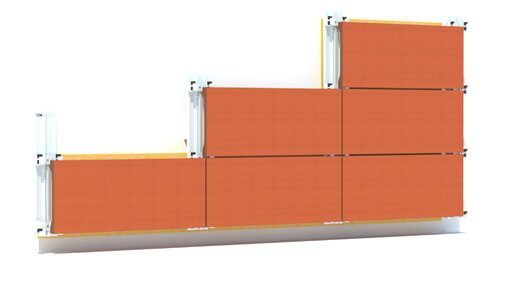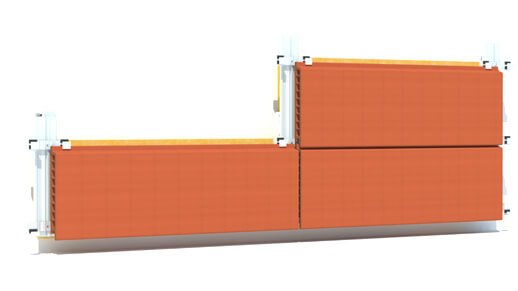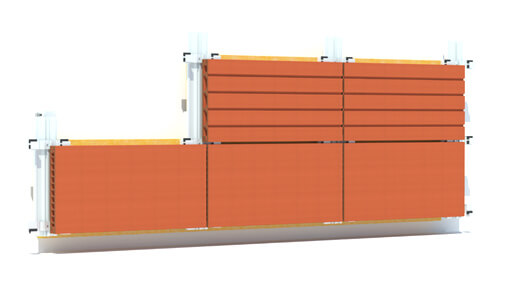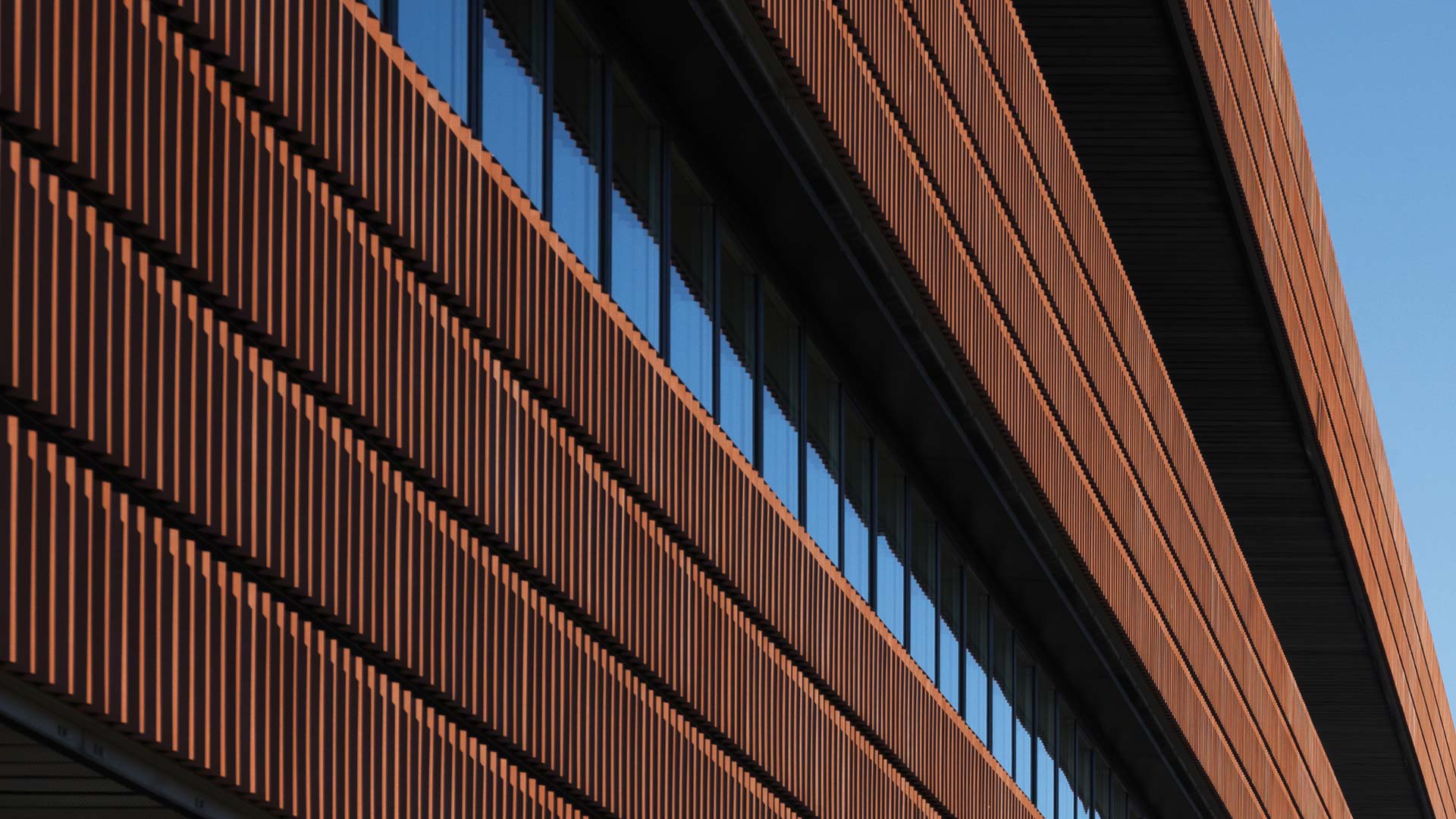
Terracotta Wall Cladding Ventilated Facades
Efficiency, rationality and aesthetics
The technique of ventilated façades is born from the demand to integrate three essential aspects of modern architecture: efficiency, rationality and aesthetics. Aspects that are conditioned by a new project conception where the importance of the image is implemented through a more conscious and attentive look, aimed at containing energy consumption and optimizing comfort.
The use of ventilated cladding in terracotta grants considerable advantages.
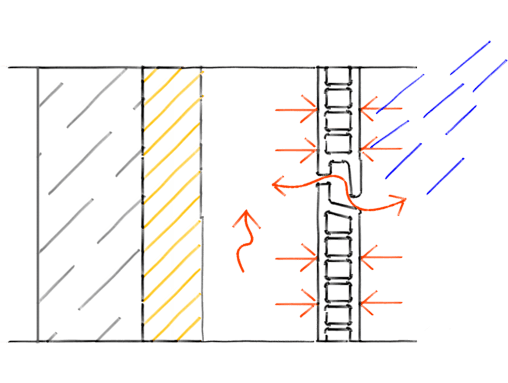
Terracotta Wall Cladding Rainscreen Function
Traditionally, the most common technique used in construction to avoid water infiltrations inside the building consists of eliminating the openings through the use of sealing materials. The difficulty of a workmanlike application of these materials and the solicitations caused by thermal expansion and direct exposure to solar rays often causes a deterioration of the system which can only be contained through intensive maintenance. The rain screen technique, on the other hand, aims at removing the factors that allow water penetration.
In fact, the combined presence of the external cladding consisting of a dry installation of panels and an air chamber, connected to the external environment through the open joints between the panels, allows to:
- intercept most of the rain water (mechanical screening with gravity elimination and kinetic energy)
- avoid phenomena of infiltrations for capillarity
- avoid phenomena of water passage due to the difference of pressure (equalization of pressure)
Control of humidity and interstitial condensation
Thanks to the difference of pressure between the inside and outside and due to layers permeable to the vapor, the presence of the air chamber allows the water vapor, to pass through the wall and to be eliminated thanks to the convective motion that is established in the air chamber.
Moreover the chimney effect allows a fast evaporation of the construction water resulting from other, wet-installed, materials constituting the wall.
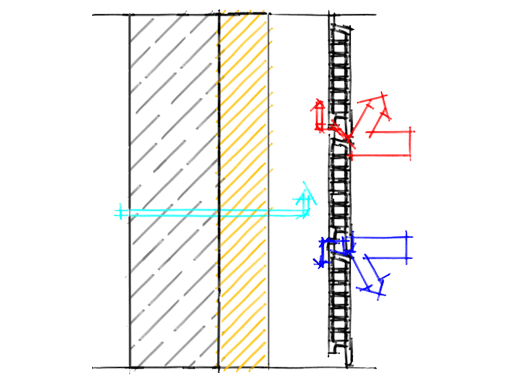
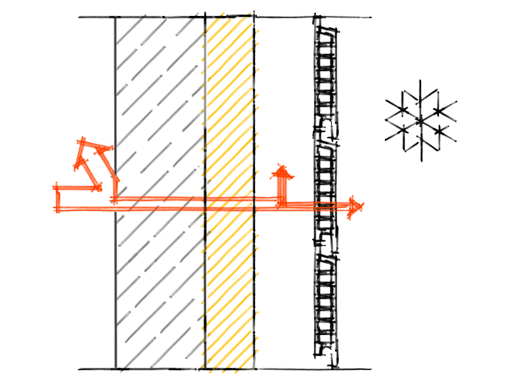
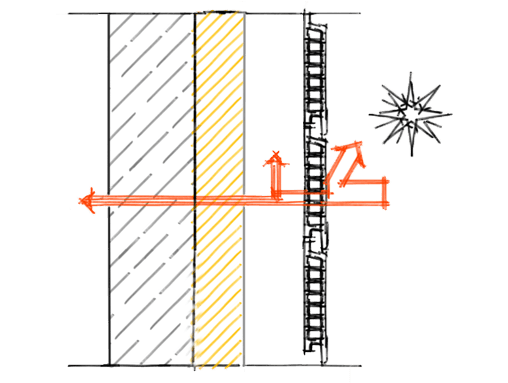
Saving energy through the chimney effect
In summer the ventilated façade constitutes a shield against solar radiation: the heat accumulated on the surface of the wall is not transmitted to the underlying layers and it is dissipated thanks to the chimney effect: a direct air flow from the bottom upwards between the external cladding and the inside wall allows the evacuation of heat through the open joints and the top of the façade.
Elimination of thermal bridges
The major conductivity of thermal bridges with respect to the adjacent constructive elements is a critical point in buildings’ coverings. In these areas stain, mold formation and the deterioration of constructive components may occur; as a consequence, this can lead to an increased energy dissipation. Thanks to the installation of an insulator from outside without solution of continuity, the ventilated façade system allows to create an easy and advantageous reduction of thermal bridges.
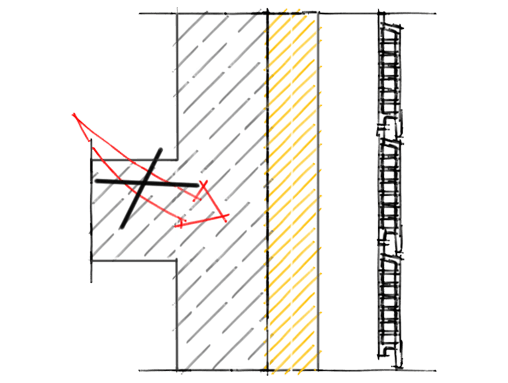
Thermal inertia
The internal environment of a building clad with a ventilated façade is less subject to thermal shocks and to interruption of heating at night, infact the insulation placed on the external surface of the wall allows to maintain a higher temperature in the whole building complex than if insulated from inside.
Acoustic comfort
Ventilated façades create a constant thermal and acoustic insulation: the joints between the panels, the air gap and the thermal insulation, its compositions in layers of different specific weight, ensure a strong reduction of noise pollution.
The use of terracotta increases the acoustic performances, granting an excellent behavior with regard to rain and hail as well as closing off external noises.
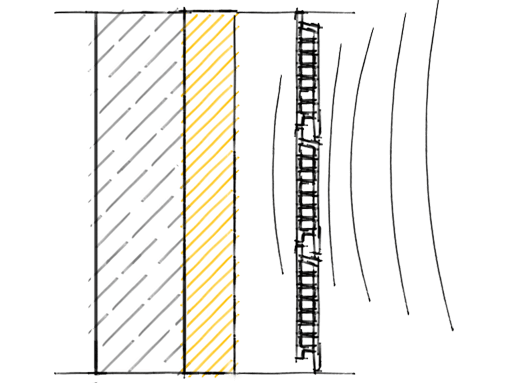
Comfort conditions
A natural control of humidity and temperature, allowing a reduced use of mechanic interventions in environments with moderate climate, grants high comfort to the user.
Maintenance and durability
The performances and features of a ventilated façade make its use an excellent choice with regard to maintenance and durability, thanks to the following characteristics:
maintenance of its performances under the influence of heat, solar radiation, rain water, frost and thaw, i.e. resistance to temperature variations, thanks to the protection against atmospheric agents and condensate, to convective motions in the ventilation channel keeping the internal portions of the air gap and of the insulator dry and avoiding condensation, to the protection against water, to the protection from radiation and from thermal stress deriving from construction components such as shields and isolators.
maintenance of its performances under the influence of fogs, industrial and environmental pollution, of sand, winds and dust, thanks to the resistance of terracotta to frost and to atmospheric agents.
possibility, thanks to the mechanical installation method, of replacing the individual components also after installation, of washing the clad surface and of checking its state of conservation to restore it only locally where necessary.

